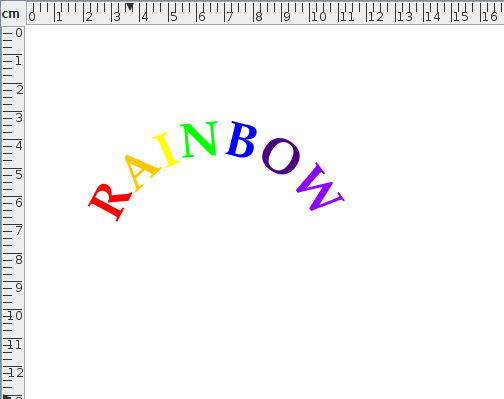Splitting Text Areas
A text area or text-path can be split into a group containing text areas each consisting of a single character. The original alternative LaTeX text will be lost. (No mappings will be used.)
For example, in Figure 8.51(a) there is a single text area containing the seven characters that make up the word "Rainbow". This text area was then converted into a group of seven text areas using Transform->Split Text. The group was then ungrouped (see Figure 8.51(b)) and each text area was then given a different text colour resulting in the image shown in Figure 8.51(c).
|
Note that if you split a text-path, you will lose the underlying path as the result will be a group of text areas. For example, the text-path shown in Figure 8.52(a) was split to create a group containing seven text areas.
|






